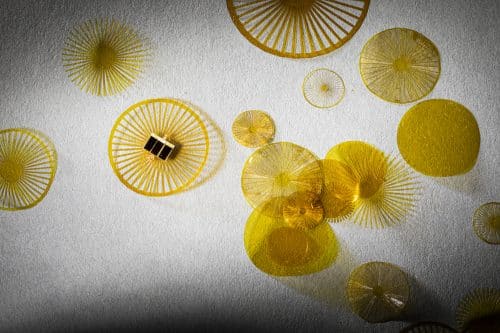University of Washington researchers created this battery-free, solar-powered sensor inspired by dandelions.
In order to monitor environmental conditions, we need hundreds of sensors. However, that is extremely time-consuming and expensive to physically place so many devices across a large area. This is why researchers at the University of Washington developed this sensor-carrying device.
This device is 30 times the weight of a 1 milligram dandelion seed, but it can still fly up to 100 metres in a moderate breeze, roughly the length of a football field, from where it was launched by a drone. Once on the ground, the device, which can accommodate at least four sensors, is powered by solar panels and can communicate sensor data with other devices up to 60 metres distant.

“We show that you can use off-the-shelf components to create tiny things. Our prototype suggests that you could use a drone to release thousands of these devices in a single drop. They’ll all be carried by the wind a little differently, and basically you can create a 1,000-device network with this one drop,” says senior author Shyam Gollakota, professor in the Paul G. Allen School of Computer Science & Engineering at the University of Washington. “This is amazing and transformational for the field of deploying sensors, because right now it could take months to manually deploy this many sensors.”
Because the devices contain electronics, it’s difficult to make the entire system as light as a dandelion seed. The initial stage was to create a shape that would allow the system to slowly descend to the ground and be thrown around by the breeze. The researchers experimented with 75 different designs to see which would result in the smallest “terminal velocity,” or the greatest speed at which a device may fall through the air.
“This is just the first step, which is why it’s so exciting,” says Vikram Iyer, assistant professor in the Allen School and lead author of the paper. “There are so many other directions we can take now—such as developing larger-scale deployments, creating devices that can change shape as they fall, or even adding some more mobility so that the devices can move around once they are on the ground to get closer to an area we’re curious about.”
The entire paper is published in Nature Electronics.






